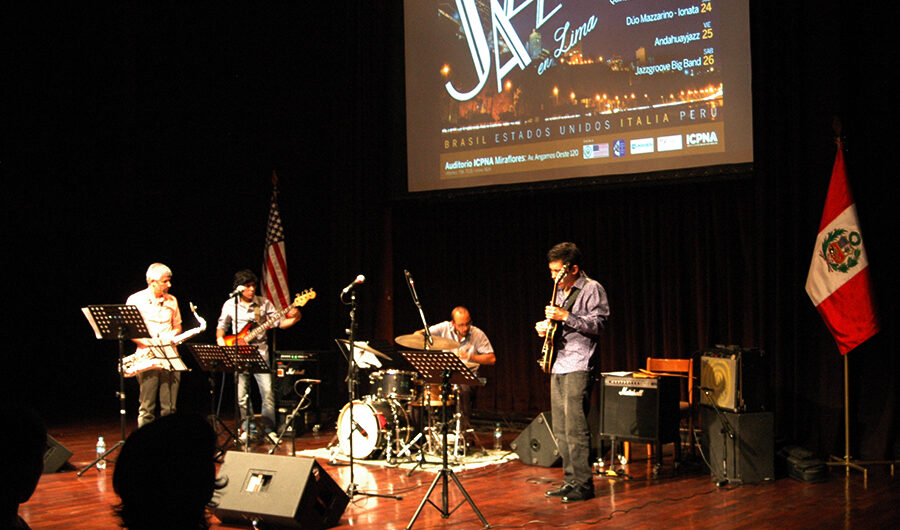Lima is a city with much more than ceviche restaurants, coastal views and congested streets–like any capital city, it has its cosmopolitan side as well. This past week, for example, marked the 24th annual Jazz Festival in Lima, which featured bands from Italy, the United States, Brazil and, of course, Peru. The festival is hosted by the Peruvian Cultural Institute of North American (ICPNA) at its venue located in the Miraflores district of Lima.
Each evening a different band offered an evening of jazz, beginning with The Native Jazz Quartet from the United States, whose members hail from America, Asia and Europe and play jazz in the tradition of the swing-bepop style. They were followed by the Jazz Crew, a quartet led by Mónica Gastelumendi, whose innovative sound fuses musical traditions from Brazil, Spain and Peru. Wednesday evening brought Brazil to the stage with the Carioca Bossa Jazz Quintet, with members from Brazil and Peru, including famed singer from Rio de Janeiro, Laura Valle and Peruvian guitarist Sergio Valdeos. After Brazil, the Dúo Mazzarino-Ionata, two Italian musicians, gave the festival a taste of European jazz. Friday evening, the group Andahuayjazz, led by Lima native, Fredy Guzmán, offered a varied repertoire, fusing elements from the folk music of Cusco, Andahuaylillas and Ayacucho, as well as traditional jazz, blues and themes from Indian musician Ravi Shankar. Jazz Groove closed the festival on Saturday with its big band jazz ensemble that spanned the range of roots and styles of the genre.
I spent my Friday evening listening to Andahuayjazz, a quartet formed by guitarist Fredy Guzmán from Lima, saxophonist David Comidi from Tel Aviv, drummer Ken Ychikawa from Boston and bassist Noel Marambio from New York. Guzmán, who received a scholarship to study at Berklee College of Music, composed the songs based on diverse themes, with a focus on Andean folk music that included well known Andean pieces like Valicha, Linda Andahuaylina, Ojos Azules and Negra del Alma. The band was joined for two songs by Peruvian singer, Dámaris Mallma Porras. The theater was full, and in the crowd, Guzmán’s grandfather from the Andahuaylillas region was present, listening to songs he knew growing up in a small, Andean town southeast of Cusco. The crowd gave a standing ovation and begged an encore of the group that, in spite of being composed of young musicians, impressed the audience with its sophisticated and impeccable performance.
The Jazz Fest is one example of a growing number of music festivals that take place in Lima each year. Institutes like the ICPNA host a slew of cultural events that enrich the city and bring international movements here to the capital of Peru.

